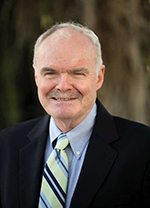The Grade for Crossings: F-plus
The scary Tri-Rail accident yesterday, in which a car burst into flames around the train after it was struck at a crossing, is just the latest of many such accidents on South Florida’s outdated railroads. The tracks themselves are not outdated. Both sets of tracks on the CSX and FEC are first class; it is where they cross roads that makes both railroads archaic systems.
Where tracks in most northern cities were either elevated or depressed to eliminate grade crossings a century ago, Florida has let cities expand all along the tracks without dealing with the hazard that the crossings present. You can go from New York to Washington without finding more than a few such crossings. They were almost all eliminated back in the days when horse-drawn carriages, rather than trucks and cars, were using the roads which intersected railroads. That’s the reason Amtrak can run trains at 150 miles an hour. Here you are lucky to go a half mile without a grade crossing, each one an accident waiting to happen.
It could be worse. When I-95 was built parallel to the CSX tracks, grade crossings on the busiest crossroads were eliminated. But some still exist, and with Amtrak and Tri-Rail running trains that exceed 70 miles per hour through highly populated neighborhoods, serious accidents are inevitable. The papers ran the score card today. From 2005 to August 2011, there were 170 grade crossing accidents in the three-county area. Forty-one people were killed, 58 injured.
Now it could get worse, much worse. Tri-Rail is sensibly trying to move some of its trains from the CSX route to the much more useful FEC, whose tracks hit the downtowns where most commuters work. Ridership should take off. But you can expect accidents to also increase. There are enough now on the FEC with freight trains lumbering along at 35 miles an hour. Much faster, and more frequent commuter trains will cause more, and possibly much more, serious accidents.
Thanks to the I-95 rebuild years back, Tri-Rail presently has only a handful of dangerous crossings in Broward, such as the one at Commercial Boulevard in yesterday’s crash. In contrast the FEC has dozens, including all the busy east-west highways from Oakland Park Boulevard south to Hollywood. If the service is switched, trains will probably not be able to go faster than 50 mph. That’s still a big improvement over no service at all, but to reach its potential Tri-Rail (and Amtrak might switch as well) would require an extensive rebuild of the FEC.
It does not have to be done all at once. Some crossings could simply be closed, but eventually the busy roads have to bridge the tracks. And in the longer run, the entire FEC, all the way to Jacksonville, needs to get what northern railroads got a century ago. Costly, sure. But think of the jobs. And it should be considered an investment, rather than a stimulus, in which a fast, convenient commuter service will return the money in economic development near the stations.

